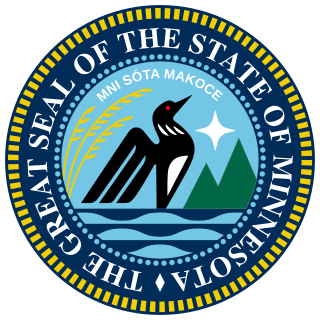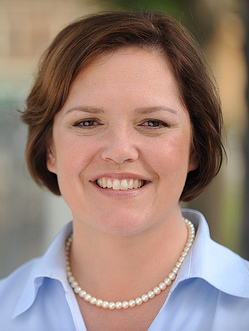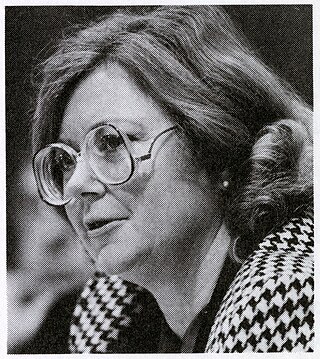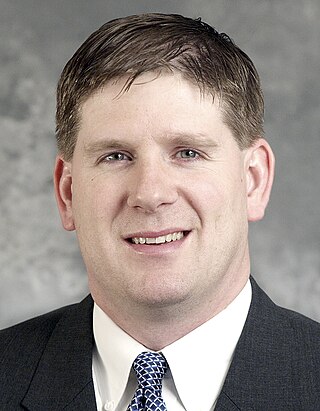
The Minnesota Democratic–Farmer–Labor Party (DFL) is a political party in the U.S. state of Minnesota affiliated with the national Democratic Party. The party was formed by a merger between the Minnesota Democratic Party and the Minnesota Farmer–Labor Party in 1944. The DFL is one of two state Democratic Party affiliates with a different name from that of the national party, the other is the neighboring North Dakota Democratic–Nonpartisan League Party.

The Minnesota House of Representatives is the lower house of the U.S. state of Minnesota's legislature. It operates in conjunction with the Minnesota Senate, the state's upper house, to craft and pass legislation, which is then subject to approval by the governor of Minnesota.

Paul Thissen is an American politician and jurist serving as an associate justice of the Minnesota Supreme Court. He previously served as the Speaker of the Minnesota House of Representatives and DFL Minority Leader. Thissen was the longest-serving leader of the Minnesota House Democrats since Martin Olav Sabo in the 1970s. A member of the Minnesota Democratic-Farmer-Labor Party (DFL), he represented District 61B in south Minneapolis. First elected in 2002, Thissen was reelected every two years through 2016. On April 17, 2018, Governor Mark Dayton appointed Thissen to the Minnesota Supreme Court. He was sworn in on May 14, 2018. He is the first person to have served both as Minnesota House Speaker and on the Minnesota Supreme Court.

Melissa Hortman is an American politician and the Speaker of the Minnesota House of Representatives. A member of the Minnesota Democratic–Farmer–Labor Party (DFL), Hortman represents District 34B in the northern Twin Cities metropolitan area, which includes the cities of Brooklyn Park, Champlin and Coon Rapids and parts of Anoka and Hennepin Counties.

Margaret Anderson Kelliher is an American politician, Director of the Minneapolis Department of Public Works, former Commissioner of the Minnesota Department of Transportation, and a former member of the Minnesota House of Representatives. A member of the Minnesota Democratic–Farmer–Labor Party, she represented District 60A, which includes portions of the city of Minneapolis in Hennepin County, located in the Twin Cities metropolitan area. First elected in 1999, she served until 2011, also serving as the Speaker from 2007 to 2011. She is the second woman to hold the position of House speaker. She was an unsuccessful candidate for the DFL nomination for Governor of Minnesota in the 2010 gubernatorial election, losing to former Senator Mark Dayton. Anderson left the Minnesota House of Representatives at the conclusion of her term in 2011 and re-entered politics when she ran for the DFL nomination to the U.S. House of Representatives in Minnesota's 5th congressional district in 2018, losing to Ilhan Omar. Since 2019 Kelliher, has worked in transportation management roles for the government, first as Commissioner of MnDOT, and later as Director of Public Works for the City of Minneapolis. She currently serves as the City Operations Officer for the City of Minneapolis.
Ron Erhardt is a politician from the U.S. state of Minnesota and former member of the Minnesota House of Representatives. He represented District 49A, which included most of Edina in Hennepin County.
The following table indicates the party of elected officials in the U.S. state of Minnesota:

Dee Long is a Minnesota politician, a member of the Democratic-Farmer-Labor Party, and a former member of the Minnesota House of Representatives, representing part of Minneapolis. Long was the first woman to serve as Speaker of the Minnesota House of Representatives, a position she held from 1992 to 1993.

Fred C. Norton was a Minnesota politician, a member of the Democratic-Farmer-Labor Party, a Speaker of the Minnesota House of Representatives, and a judge of the Minnesota Court of Appeals.

Aubrey W. Dirlam was a Minnesota politician and a former member of the Minnesota House of Representatives who represented the old District 14, District 17, District 17A, and District 21B, which included all or portions of Brown, Kandiyohi, Redwood, Renville and Yellow Medicine counties in the southwestern part of the state. The district number and boundaries changed through the years due to redistricting.

Kurt Zellers is an American politician who served as speaker of the Minnesota House of Representatives from 2011 to 2013 and minority leader from 2009 to 2011. A member of the Republican Party of Minnesota, he represented the 34B district in Hennepin County. He was a candidate in the 2014 Minnesota gubernatorial election, losing in the Republican primary.

The Eighty-eighth Minnesota Legislature was the legislature of the U.S. state of Minnesota from January 8, 2013, to January 5, 2015. It was composed of the Senate and the House of Representatives, based on the results of the 2012 Senate election and the 2012 House election. The seats were apportioned based on the 2010 United States census. It first convened in Saint Paul on January 8, 2013 and last met on May 16, 2014. It held its regular session from January 8 to May 20, 2013, and from February 25 to May 16, 2014. A special session was held on September 9, 2013, to pass disaster aid legislation related to damage caused by storms and flooding in June 2013 and winter storms in April 2013.

The seventy-ninth Minnesota Legislature first convened on January 3, 1995. The 67 members of the Minnesota Senate were elected during the general election of November 3, 1992, and the 134 members of the Minnesota House of Representatives were elected during the general election of November 8, 1994.

The 1978 Minnesota House of Representatives election was held in the U.S. state of Minnesota on November 7, 1978, to elect members to the House of Representatives of the 71st Minnesota Legislature. A primary election was held on September 12, 1978.

The seventy-second Minnesota Legislature first convened on January 6, 1981. The 67 members of the Minnesota Senate and the 134 members of the Minnesota House of Representatives were elected during the general election of November 4, 1980.

The seventy-first Minnesota Legislature first convened on January 3, 1979. The 67 members of the Minnesota Senate were elected during the General Election of November 2, 1976, and the 134 members of the Minnesota House of Representatives were elected during the General Election of November 7, 1978.

The 2020 Minnesota Senate election was held in the U.S. state of Minnesota on November 3, 2020, to elect members to the Senate of the 92nd Minnesota Legislature. A primary election was held in several districts on August 11, 2020. The election coincided with the election of the other house of the Legislature, the House of Representatives, and other elections.

The Ninety-second Minnesota Legislature is the legislature of the U.S. state of Minnesota from January 5, 2021, to January 3, 2023. It is composed of the Senate and House of Representatives, based on the results of the 2020 Senate election and 2020 House election.

The Ninety-fourth Minnesota Legislature is the upcoming meeting of the legislative branch of the state of Minnesota, composed of the Minnesota Senate and the Minnesota House of Representatives. It will convene in Saint Paul on January 14, 2025, following the November 2024 elections for the House as well as a special election for Senate District 45. The Democratic–Farmer–Labor Party (DFL) held a one-seat majority in the Senate and a five-seat majority in the House in the previous legislature.














